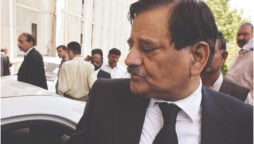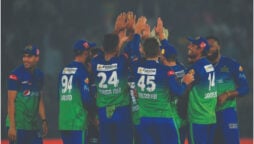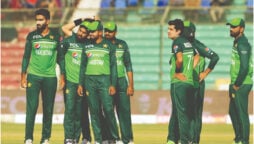
Pakistan Cricket back to lab tests
The change of management in PCB signals a wave of fresh decisions
It has been a testing time for Pakistan and Babar Azam this home winter. Saqlain Mushtaq and Babar may throw a spin best they can by talking of winning sessions and even going as far as using the word ‘domination’ of the Tests, even against England.
But the fact remains they created history by losing four Tests in a row at home. And the first-ever home whitewash. And ever since they started playing Test cricket at home in 1954-55, they have failed to win a Test in a calendar year where they have played at least seven Tests. They have gone winless at home in 1998 (two losses out of five) and earlier in 1969 (one loss out of six).
Their great escape due to bad light after a brainless declaration in the first Test against New Zealand and their inability to bowl out the Kiwis’ last pair on the second day of the second Test has led to serious doubts about Pakistan’s bowling ability on unfriendly pitches.
As I write at the end of that second day, Pakistan are being hard-pressed to come close to New Zealand’s 449 and look unlikely to win any Test at home this season unless the blackcaps collapse to a low score in their second innings and the Pakistani top order show less adventurism in their strokeplay.
Questions on Babar’s captaincy have been raised once again during this time and his acumen on the field has been brought under the microscope.
I’ve written here before also that he lets the game meander on hoping for mistakes from the batting side. That he hardly crowds the batters even when he is on a roll.
This was on display again when New Zealand went from 234-1 to 309-7 to 345-9 but you wouldn’t see more than two close-in fielders to spin or more than two slips as the last pair put on 104.
Then he wouldn’t bowl Salman Agha on the second day until near the end after he’d taken 3 quick wickets in the last session of the opening day and was turning the ball prodigiously.
Babar is treading broken glass here no matter how much Chief Selector Shahid Afridi has said about supporting him. I feel Babar is being cut down to size here by the new PCB management and the selectors.
This I think has come about mainly by his intransigence on the final eleven’s selection over the past two years where his obduracy in persisting with failures has led to limited opportunities for emerging talent or better replacements. That supreme power granted him by Ramiz has permeated to even off the field.
Recall what happened on the morning of the third Test against England in Karachi. Babar had sat out the first hour in protest because he had been stopped by security the night before as he and some Pakistani cricketers tried to go out to a restaurant without following proper processes and procedures considering the security situation and the SOPs put in place.
Let’s assume the best, that he had cause to gripe maybe because of the way he was told by the security though there is no evidence that he was mistreated. What has that got to do with playing cricket? If he feels he was not supported by the management how can he refuse to take the field? What example is he setting for the youngsters under him and for the team in general?
Nothing came out regarding his stand but surely this called for some disciplinary measure. This was childish action really, not becoming of a Test captain.
I just wonder if that is the mindset and level of maturity what can we expect from him in times of stress in off-the-field incidents.
This is not a union where they go on strike because one player has been mishandled while going out to dinner, especially when he and his mates had broken the rules.
If Babar was in the right the previous night, there are ways to let PCB know it is not acceptable. Even complain against a PCB official if it comes to that.
Not taking the field in a Test match when the first hour can be so crucial every day is just not on. Two wrongs do not make a right, especially when they have no connection at all.
The onset of the ODIs from tomorrow will again test him. He may turn to good results in white ball cricket but firstly they have all been in the shorter format over the past six months and secondly the numbers should not overpower what happened on the field.
The team management can point to reaching the final of both the Asia Cup and the World Cup but had it not been for Naseem Shah’s two sixes against Afghanistan in the last over at Sharjah and for the Netherlands defeating South Africa in the last group game in Australia, Pakistan wouldn’t have made the knockout stage in either tournament.
Against Australia we won the ODI series 2-1 only because we were able to chase close to 350 in one of the games, otherwise, we had been badly beaten in mind power when fielding. And it was a second-string Australian bowling attack against which we won.
This is not to downplay the efforts of the Pakistanis but just to emphasise that numbers hide the inadequacies of the brain trust in the Pakistan side. Saqlain doesn’t know half of what he is saying when he says it is qudrat ka kamaal for it is indeed miraculous pieces of luck that have salvaged situations for Pakistan, not intelligent and intuitive leadership.
The troika of Saqlain, Babar and Mohammad Rizwan also seems to have been weakened by the way the ODI probables were announced, with reportedly no involvement of either.
The return of Sharjeel Khan in the longer list at least also shows that the new management believes that punishments served due to spot-fixing have been served, as the Najam Sethi-led PCB had done in 2017.
The question is whether Sharjeel can break into the opening slot that has been occupied by Imam and Fakhar Zaman (not included in the 22 announced) in the longer version of the shorter game.
Or will the selectors go for Shan Masood who has shown even in the Tests he has played this season that he has a penchant for playing his strokes from the moment he arrives at the crease. It hasn’t served him well in the Tests but it could be a harbinger for the ODI approach the Pakistani selectors must be looking for.
Shahid Afridi has already fired the first salvo on this front by announcing that when it comes to T20 Internationals he will consider only those batters with a strike rate of 135 or more in domestic T20s.
Which is amusing since Shahid Afridi and Co have been brought in as a temporary panel with a brief for the New Zealand series (unless they are given a longer lease by Najam Sethi) and Pakistan don’t play a T20 international till April when New Zealand return.
Pakistan were due to play three T20Is against West Indies at home this month but that has apparently been put off due to the new league in the Emirates.
The question that PCB must be asking the most however is whether the National Stadium (now the National Bank Cricket Arena) will see the stadium filling up.
The fact that even a free entry incentive has failed for the second Test must make them stand up and take notice. Yes, white ball cricket has its attraction but there are other factors that are making Karachiites at least stay away from watching the game from the stands.
PCB has to have a look at making these matches crowd-friendly. Let’s look back at what has transpired over the past few weeks. Agreed there was a high stake security required for the England team. But some of what transpired for the crowd could have been better processed.

Pakistan’s captain Babar Azam sets the field during the third day of the first Test match between Pakistan and New Zealand at the National stadium in Karachi on December 28, 2022. (Photo by Asif HASSAN / AFP)
Take tickets for example. PCB lets it out to an online booking company. All over the world you just show your ticket on your phone and are let in. At most, they can scan a code on your phone screen and let you through.
But to buy the ticket online and then make it to the stadium in over an hour from the parking area through shuttles or by walking and then have to get to a mobile van to get a printout of the ticket is sheer stupidity and nonsense.
That too can take an hour, meaning someone has to be at the parking lot at 8 am to get in for the start of the match. For ODIs that may mean at 12 noon.
Then you can’t bring your own food and water. OK, so the security is afraid of bombs in the lunch box but then don’t have food and water at exorbitant rates.
Yes, food is expensive at the grounds as the vendors have to win contracts at high rates. But this is Pakistan with high inflation and low wages.
And you need crowds at the stadiums. PCB is earning a pittance from attendance anyway. And the vendors won’t earn much if the spectators are not there. Just don’t charge the vendors high rates and tell them to see at market rates the food and water.
Before that make it easier for the crowds. If they have to get a printout, sell the tickets physically at the parking lots and likewise at all points from where the crowd is coming through to reach the stadium.
As it is not everyone has a smartphone to buy online; thousands more can come if they purchase the ticket physically.
The crowds were there for the T20 matches against England in September but note the ODIs from tomorrow is an eight-hour experience and not four.
They start in the afternoons and all are on weekdays. The 50-over game is also becoming to look like a drag after the audience has been fed on the 20-over format.
PCB’s marketing has been found wanting before and it will be a challenge for it to overcome all the negatives that have been associated with crowd facilities in Karachi and the logistical nightmare for the paying public to reach the stadium.
Perhaps it won’t be a bad idea to allow for free passage in the ODIs as well. Important are the scanners that spot the weaponry that can be used for terrorism; the rest can be managed by allowing spectators in who have valid CNICs. They check them anyway even when purchased online.
This new PCB management has made a few good moves in selection and spectators. Let’s see them carry that forward this week in white-ball cricket.
Sohaib Alvi has been covering cricket at home and abroad for over 40 years as columnist, editor, analyst, TV expert/host. An MBA from IBA he has simultaneously had a 35-year career in the corporate sector, having worked in C-Suite positions. He now advises clients on leadership, business strategy, marketing and organizational planning.
Catch all the Champion News, Breaking News Event and Latest News Updates on The BOL News
Download The BOL News App to get the Daily News Update & Live News.












 Read the complete story text.
Read the complete story text. Listen to audio of the story.
Listen to audio of the story.